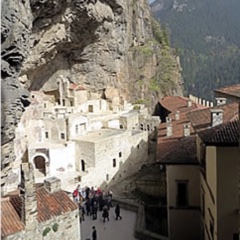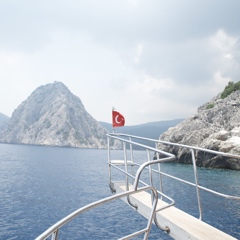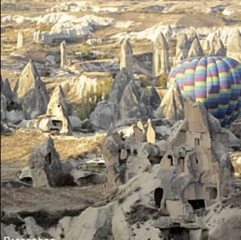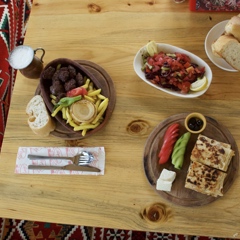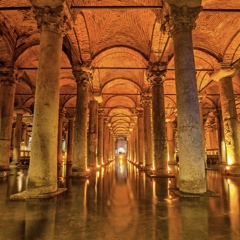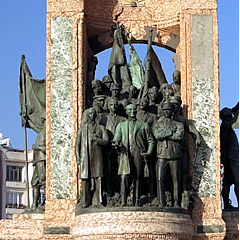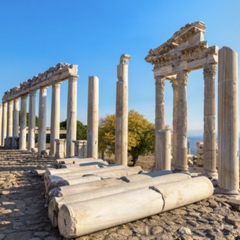Alexander, royal son of King Philip II of Macedon, said goodbye to Aristotle (his tutor), left his native Macedonia, and in 334 BC traversed Thrace and crossed the chill waters of the Dardanelles to lead his armies into Persian-occupied Anatolia.
Using both diplomatic and military offensives he defeated the Persians and subdued most of Anatolia’s kingdoms, including Sardis, Miletus and Halicarnassus (Bodrum).
After storming through Phrygia and cutting the Gordian knot at Gordion, he pressed east and south, conquering Syria and Egypt, then all of Persia, and finally reaching India.
Alexander died in Babylon in 323 BC, having accomplished more in his 33 years than most warrior families do in three generations.
After his death, his vast empire was divided among his generals, many of whom fought one another for the best parts. Lysimachus won at the Battle of Ipsus in 301 BC and claimed western and central Anatolia. Lysimachus encouraged the development of Hellenic culture in Anatolia, though the culture that emerged had important differences from that of the golden age of classical art, architecture and literature. Today we call this post-323 BC, post-Alexandrian culture Hellenistic rather than Hellenic.
Abandoning the old town of Smyrna (Izmir), Lysimachus founded a new city and fortress on the slopes of Mt Pagus (Kadifekale), where the center of Izmir stands today. The new king ordered the construction of many other grand Hellenistic stadiums and temples as well.
After several decades of rule Lysimachus was killed at the Battle of Corupedium (near modern Manisa) in 281 BC by rival general Seleucus I, ruler of southeastern Anatolia based in Antioch (Antakya).
Alexander’s campaigns rid Anatolia of the Persians and allowed its local kingdoms to flourish again, just in time for the Romans to march in.



